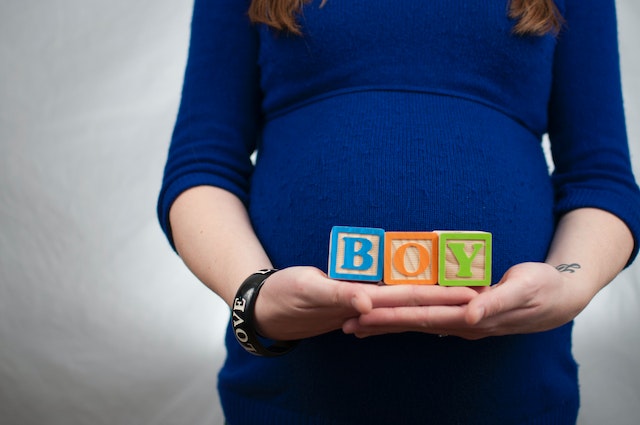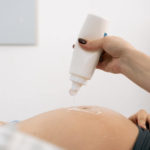Introduction
Pregnancy – a magical journey that marks the beginning of a new life. From the moment a woman gets to know she’s pregnant, her world transforms, and she embarks on a life-altering journey filled with wonder, anticipation, and excitement. Whether you’re a first-time mom-to-be or a seasoned pro, every pregnancy is different and comes with its own set of unique challenges and experiences. So, if you’re looking for guidance, support, or just some good old-fashioned camaraderie, you’ve come to the right place. Our pregnancy articles are packed with everything you need to know about this incredible journey, from the first trimester to labor and delivery, and everything in between. So, sit back, relax, and get ready to embark on one of the most incredible journeys of your life without skipping a single line.
Week 13 of pregnancy: An Overview
Congratulations! You have made it to week 13 of your pregnancy, which marks the end of the first trimester. At this point, your baby has already developed a lot, and you may have started to notice some changes in your body. Your baby is now about the size of a peach, measuring around 3 inches in length and weighing approximately 0.81 ounces. The major organs of the baby’s body are now fully formed, and their bones are beginning to harden. If you haven’t already, it’s time to schedule your next prenatal appointment with your healthcare provider. Your healthcare provider may offer you a nuchal translucency ultrasound, which can help determine the risk of Down syndrome or other genetic disorders in the baby.
Overall, week 13 of your pregnancy marks an important milestone in your journey, and you can look forward to the many exciting changes and developments that lie ahead. Make sure to continue taking care of yourself and your growing baby, and don’t hesitate to reach out to your healthcare provider if you have any questions or concerns.
Baby’s development in week 13 of pregnancy
Your baby has shown remarkable growth in these 13 weeks. From a single cell to a properly shaped individual your baby has shown impressive development. At week 13 of pregnancy, the baby has undergone significant growth and development. Here are some of the key developments that occur during this week:
- Size and weight: The baby is about 3 inches long and weighs around 0.81 ounces. The baby is about the size of a pea pod.
- Organ development: The baby’s organs continue to develop and become more specialized. The digestive system is starting to function, and the baby may start to swallow small amounts of amniotic fluid.
- Fetal movement: By week 13, the baby is starting to move and flex its limbs. Although the mother may not yet feel these movements, the baby is starting to develop a more coordinated and active nervous system.
- Fingers and toes: The baby’s fingers and toes have separated and have distinct nails. The baby is also able to make a fist.
- Face development: The baby’s face is becoming more distinct, and the eyes have moved closer together. The ears are also developing and moving into their proper position.
- Vocal cords: The baby’s vocal cords are starting to form, and the baby may begin to make small sounds, such as sucking or swallowing.
- Hair growth: The baby’s hair is starting to grow, and some babies may even have a visible hair pattern on their scalp.
Largely, at week 13, the baby is developing at a rapid pace, and many of its organs and body systems are beginning to function. The mother needs to continue to receive proper prenatal care and support to ensure the health of both herself and her developing baby. Let’s have a detailed look at how your body needs your attention and what changes it is going through in week 13.
Woman’s body in week 13 of pregnancy
At week 13 of pregnancy, a woman’s body has undergone significant modifications as the fetus continues to grow and develop. Here are some of the changes and developments that occur during this week:
- Uterus: The uterus has grown to accommodate the growing fetus, and by week 13, it’s about the size of a grapefruit. As the uterus expands, it puts pressure on the bladder, causing the woman to feel the need to urinate more frequently.
- Hormones: Hormones such as estrogen and progesterone continue to be produced by the ovaries and placenta, respectively. These hormones help to maintain the pregnancy and support the development of the fetus.
- Breast changes: The breasts continue to prepare for breastfeeding as the milk ducts and glands grow and develop. Many women may experience breast tenderness, swelling, or darkening of the areolas.
- Maternal weight gain: Women typically gain around 1 to 2 pounds per week during the second trimester. This weight gain is important for the healthy development of the fetus.
- Skin changes: Some women may experience the appearance of a dark line down the center of their belly, called the linea nigra. Stretch marks may also start to appear on the abdomen, breasts, and thighs.
- Energy levels: Many women experience a surge in energy during the second trimester, and the fatigue and morning sickness of the first trimester may begin to subside.
Summing up the developments, at week 13 of pregnancy, a woman’s body has undergone significant changes, and the fetus is continuing to grow and develop at a rapid pace. Women need to continue to receive proper prenatal care and support to ensure the health of both themselves and their developing babies.
Checklist for week 13 of pregnancy
To ensure healthy pregnancy here is a detailed checklist for week 13 of pregnancy:
- Schedule your next prenatal appointment: Call your healthcare provider to schedule your next prenatal appointment, which is typically between weeks 16 and 20 of pregnancy. This will allow you to check on the health of you and your baby and discuss any concerns or questions you may have.
- Continue to take prenatal vitamins: Prenatal vitamins are important to ensure that you and your baby are getting the necessary vitamins and minerals. Be sure to take your vitamins as directed by your healthcare provider.
- Diet: Aim to drink at least eight glasses of water each day and eat a healthy diet comprising all essential nutrients.
- Get enough sleep: Try to get at least 7-8 hours of sleep each night to support your physical and emotional health.
- Start researching childbirth classes: Childbirth classes can help you prepare for labor and delivery, so start looking into options that fit your needs and schedule.
- Talk to your healthcare provider about exercise: Regular physical activity is important for a healthy pregnancy, but be sure to check with your healthcare provider about what types of exercise are safe for you and your baby.
- Reach out for emotional support if needed: Pregnancy can be an emotional rollercoaster, so don’t hesitate to reach out to your healthcare provider, a therapist, or a support group if you’re feeling overwhelmed or anxious.
By following this checklist, you can help ensure that you and your baby are healthy and prepared for the weeks and months ahead.
Conclusion
At week 13 of pregnancy, both the mother and the baby are undergoing significant changes and development. The baby is growing rapidly, with many of its organs and body systems starting to function. The mother may also be experiencing physical and emotional changes as her body adjusts to the pregnancy. To ensure the health and well-being of both the mother and the baby, it’s important to continue receiving proper prenatal care and to maintain healthy habits.
-
Pingback: Week 15 of Pregnancy - Being Pregnant






